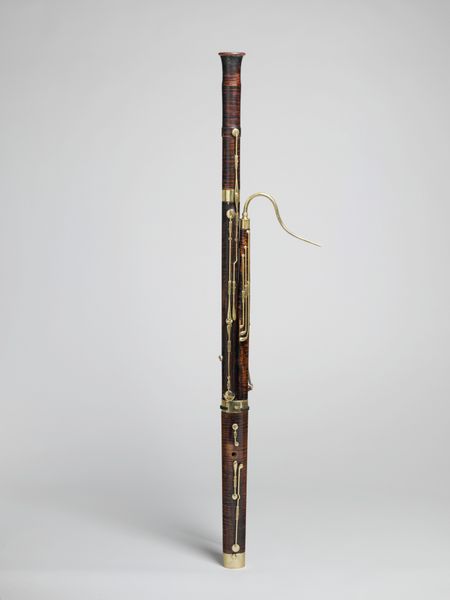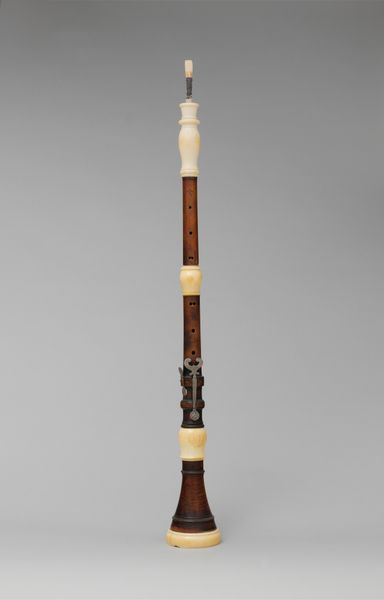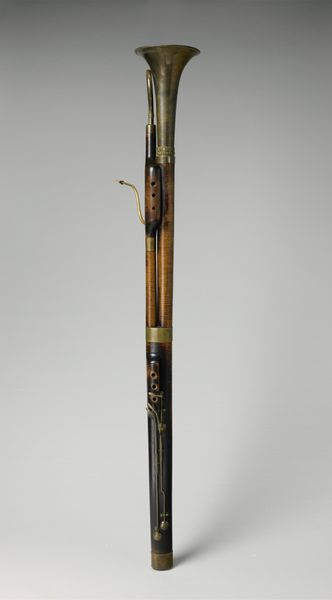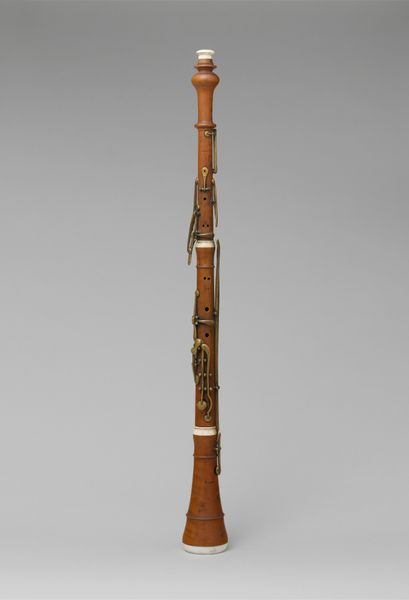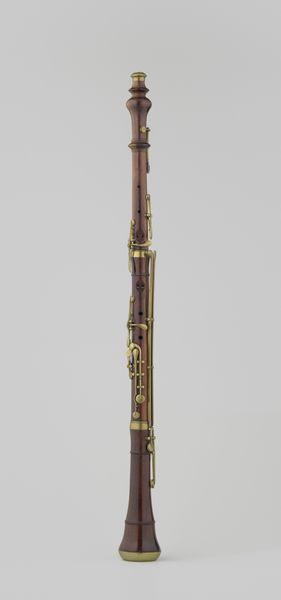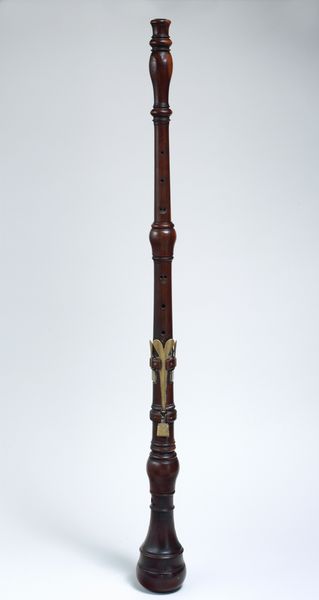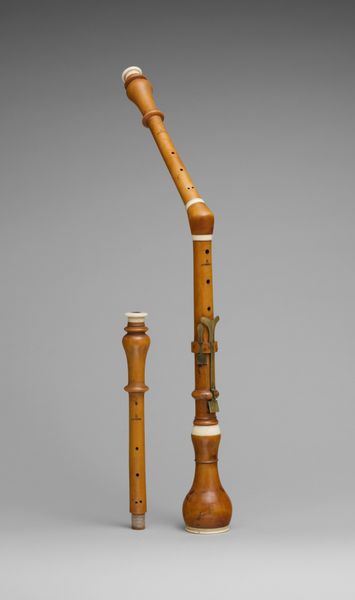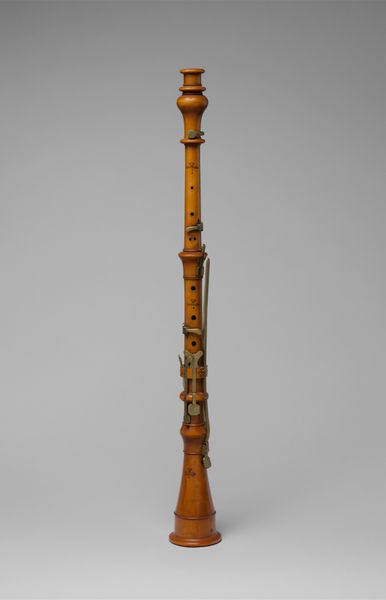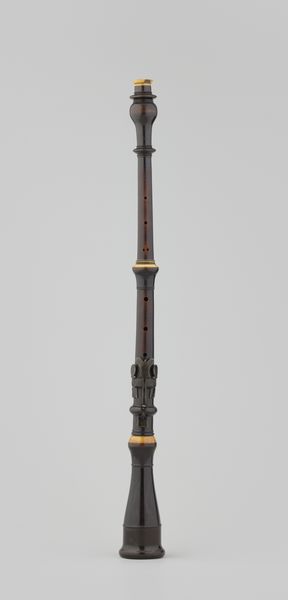
brass, wood
#
brass
#
france
#
men
#
wood
#
musical-instrument
Dimensions: 50 5/8 × 3 × 2 in. (128.6 × 7.6 × 5.1 cm) Width (With bocal): 10 3/8 in. (26.4 cm)
Copyright: Public Domain
Here is a bassoon in C by Jean-Jacques Baumann, who lived from 1772 to 1845. Considered to be one of the great woodwind instrument makers, Baumann operated in Paris during a time of both revolution and restoration. The bassoon, with its complex fingering and deep resonant tones, speaks to the era's changing soundscapes. It was a period where musical instruments became both symbols of cultural identity and tools for individual expression. How does the dark wood and gleaming brass evoke a sense of both tradition and innovation? Instruments like these are a part of the history of classical music that has often elevated white, male composers. Yet, the bassoon itself has traveled through many hands, cultures, and stories. It reminds us to question who gets to make music and whose voices are amplified. The bassoon invites us to reflect on the relationship between instrument, maker, performer, and listener.
Comments
No comments
Be the first to comment and join the conversation on the ultimate creative platform.


